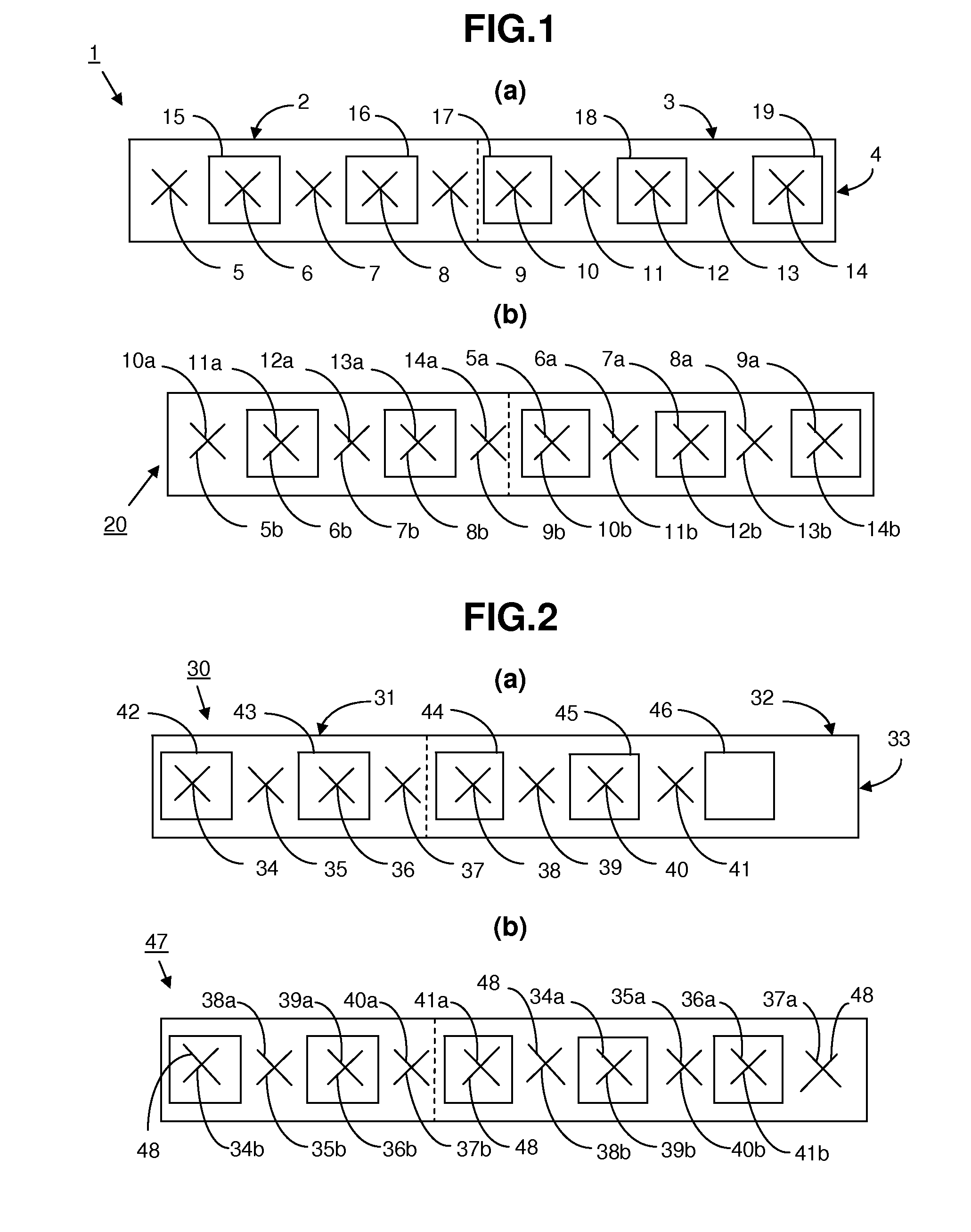Crosspolar multiband panel antenna
a multi-band panel antenna and cross-polar technology, applied in the field of telecom antennas, can solve the problems of increasing the coupling between the radiating elements operating, requiring a diversity of signals, and the implementation of decoupling techniques becoming increasingly complicated, so as to improve the decoupling effect, increase the size of the cross-polar multi-band panel antenna, and the effect of increasing the weight or cos
- Summary
- Abstract
- Description
- Claims
- Application Information
AI Technical Summary
Benefits of technology
Problems solved by technology
Method used
Image
Examples
Embodiment Construction
[0027]The radiating elements of a single antenna array are devoted to sending / receiving on a single frequency band. A dual-polarization radiating element is normally formed of two independent dipoles each comprising two colinear conductor arms with a given polarization, positive or negative, for sending / receiving radio signals. What will be described for each polarization, represented here by a dipole, also applies when the polarization is represented by a planar antenna or “patch” antenna. The radiating elements are installed longitudinally aligned above a reflector. Depending on their orientation within space, the dipoles may radiate or receive electromagnetic waves along two polarization channels, for example, a horizontal polarization channel, and a vertical polarization channel, or two polarization channels oriented +45° and −45° relative to the vertical. Each dipole of a radiating element is linked by a feed line to an outside source of power that defines its phase and amplitu...
PUM
 Login to View More
Login to View More Abstract
Description
Claims
Application Information
 Login to View More
Login to View More - R&D
- Intellectual Property
- Life Sciences
- Materials
- Tech Scout
- Unparalleled Data Quality
- Higher Quality Content
- 60% Fewer Hallucinations
Browse by: Latest US Patents, China's latest patents, Technical Efficacy Thesaurus, Application Domain, Technology Topic, Popular Technical Reports.
© 2025 PatSnap. All rights reserved.Legal|Privacy policy|Modern Slavery Act Transparency Statement|Sitemap|About US| Contact US: help@patsnap.com



